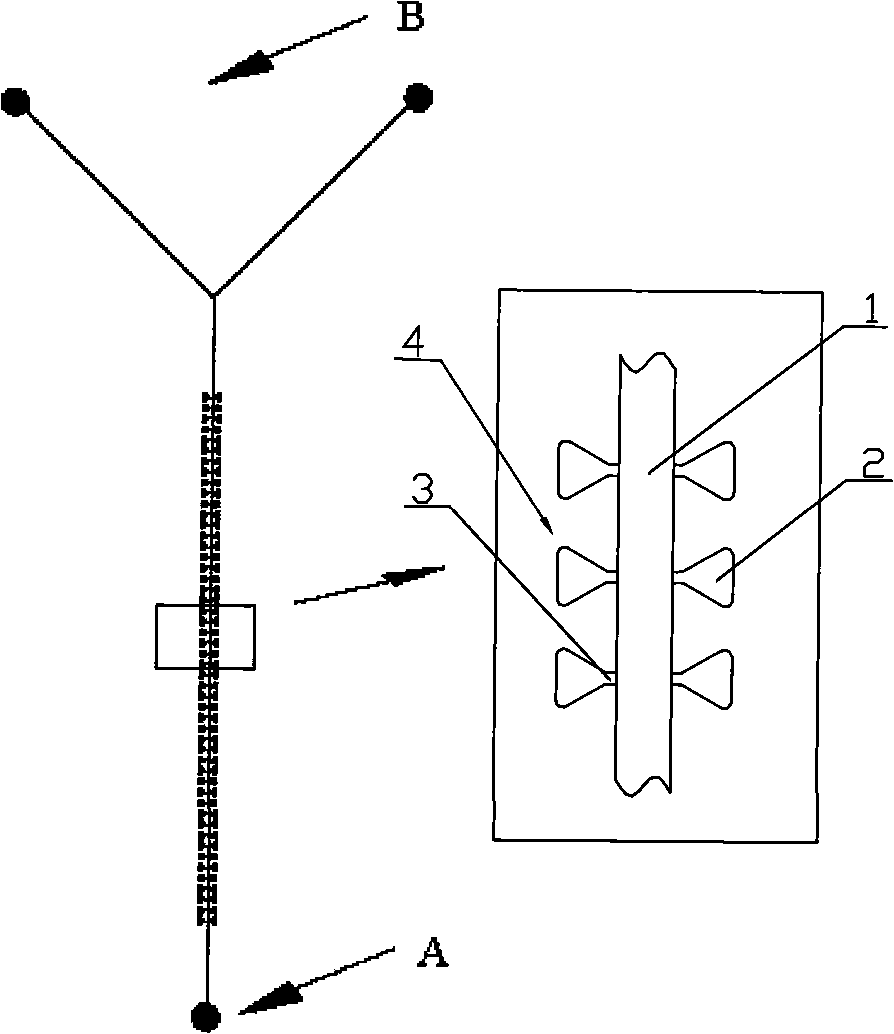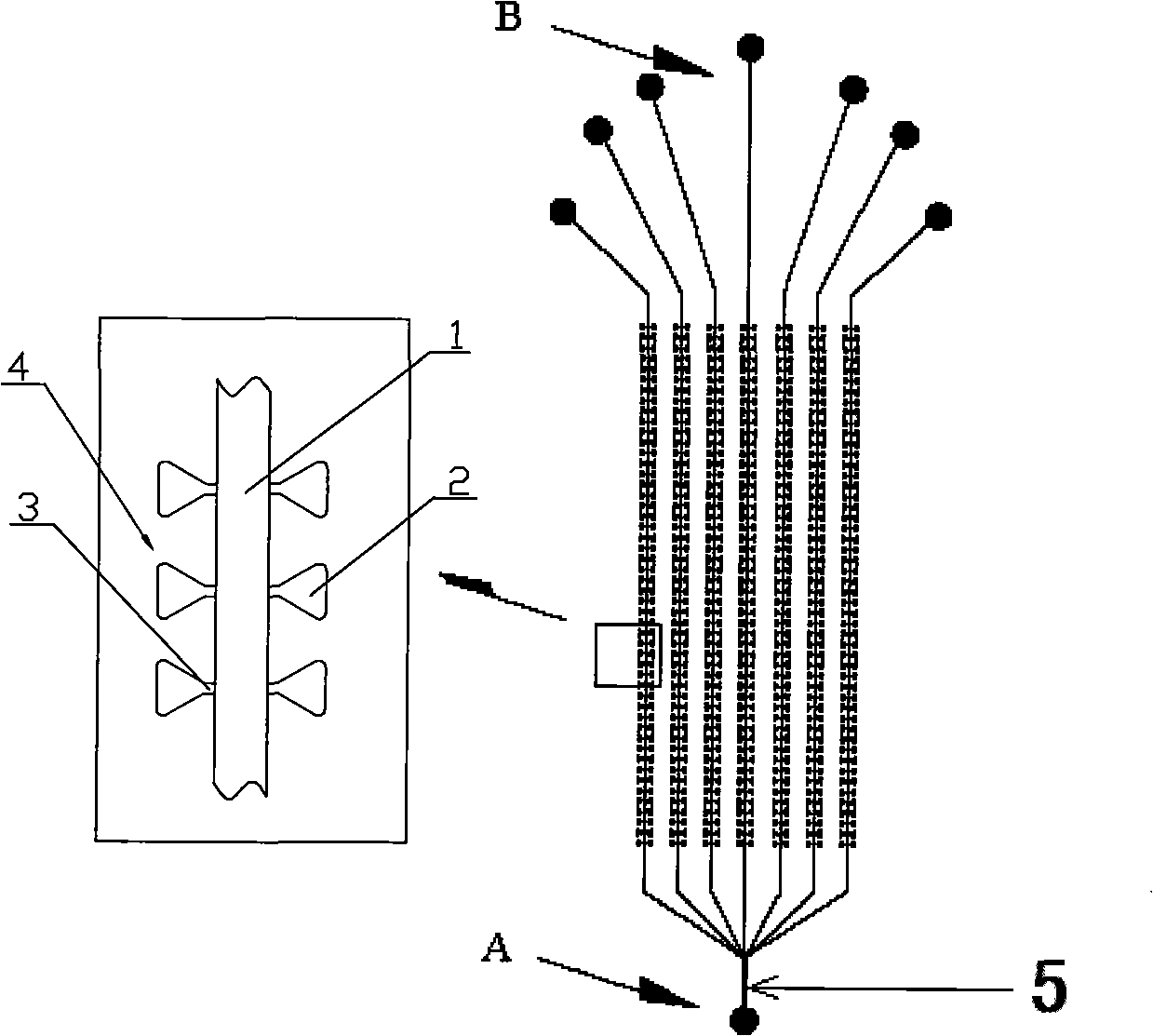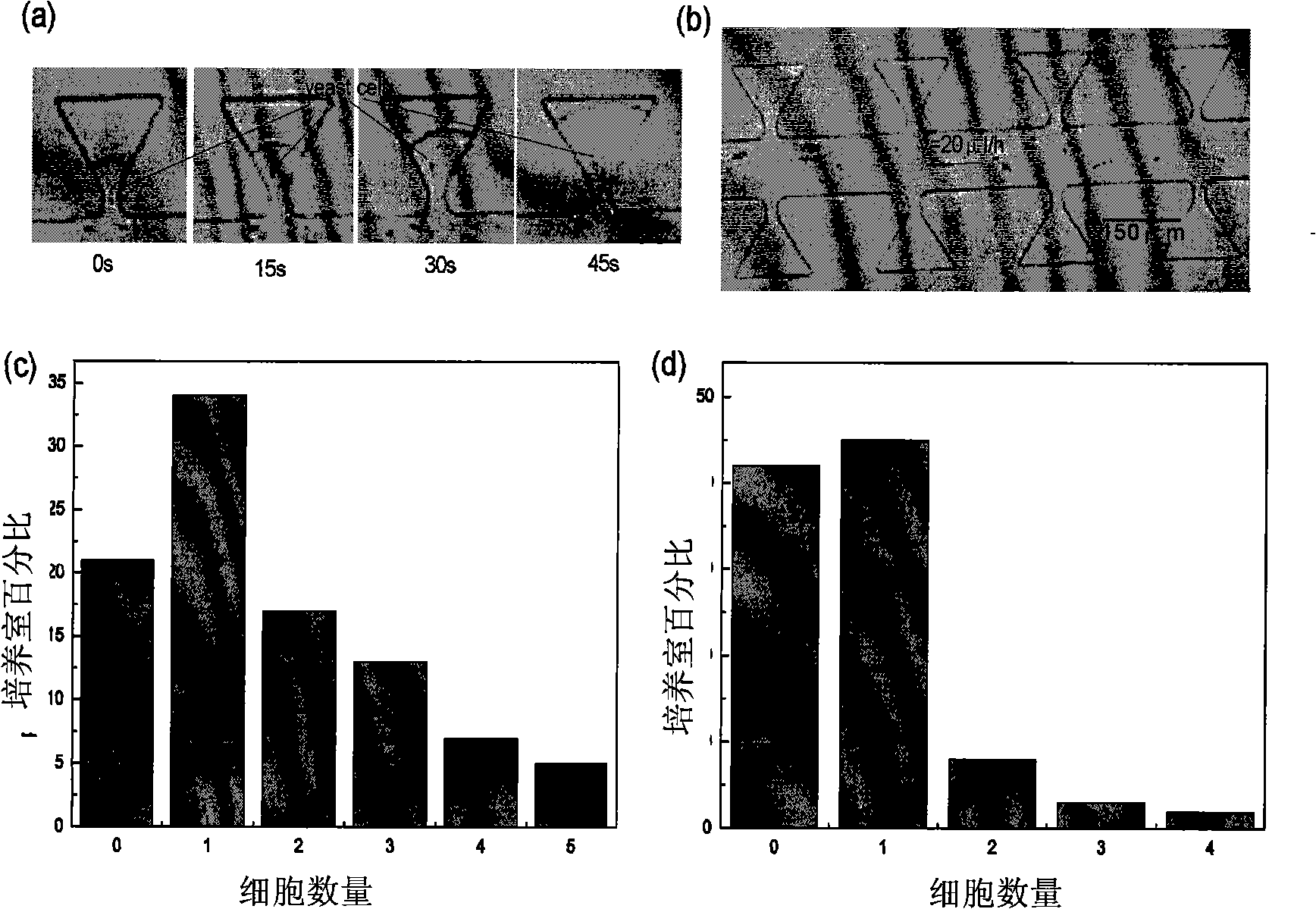Microflow cell culture array and application thereof
A cell culture and microfluidic technology, which is applied in the field of microfluidic technology and cell biology, can solve the problems of complex micromachining technology, inconvenient cultivation and observation of non-adherent cells, and the inability to observe the growth of cells for a long time. The effect of micro-observation convenience
- Summary
- Abstract
- Description
- Claims
- Application Information
AI Technical Summary
Problems solved by technology
Method used
Image
Examples
Embodiment 1
[0027] Example 1 Microfluidic cell (microbe) culture array
[0028] Such as figure 1 As shown, the width of the main channel 1 is 100 microns, the cell culture chamber 2 is an equilateral triangle with a side length of 125 microns, and the apex of the triangle is connected to the main channel 1 through a diffusion channel 3 with a width of 20 microns and a length of 20 microns. The heights of the main channel 1 , the culture chamber 2 and the diffusion channel 3 are all 6 microns. The cell culture chamber 2 and the diffusion channel 3 constitute the cell culture unit 4, and several repeated cell culture units 4 are arranged on both sides of the main channel 1, constituting the basic unit of the microfluidic cell (microbe) culture array. The microfluidic cell (microbe) culture array of the present invention is composed of one or more microfluidic cell (microbe) culture array units. figure 2 Shown in is a microfluidic cell (microbe) culture array composed of 7 microfluidic ce...
Embodiment 2
[0031] Example 2 Observation of single cell culture
[0032] In this example, the microfluidic cell (microorganism) culture array ( figure 1 ) for single-cell culture observation of yeast cells.
[0033] specific method:
[0034] (1) Cultivate yeast cells in YPG culture medium, shake evenly before use and dilute to an appropriate concentration, the concentration is about 10 7 cells / ml.
[0035] (2) Take the chip and put it in a vacuum environment for about 10 minutes, inject the bacteria from the inlet, and the pushing speed is 20 microliters / hour. Such as image 3 , the yeast cells are automatically drawn into the cell culture unit ( image 3 a), when the cell culture unit is filled with solution ( image 3 b), the cell solution in the main channel can be washed away with the culture medium, and the yeast cells are cultivated, such as Figure 4 .
[0036] Studies have shown that through the above method, the yeast cell solution is automatically sucked into the cell cu...
Embodiment 3
[0037] Example 3 Observation of Effects of Environmental Changes on Cell Phenotypes
[0038] In this example, the microfluidic cell (microorganism) culture array ( figure 2 ) to observe and count the growth of yeast cells in different culture environments.
[0039] specific method:
[0040] (1) Culture yeast cells containing copper ion-induced green fluorescent protein in YPG culture medium, shake evenly before use and dilute to an appropriate concentration, the concentration is about 10 7 cells / ml.
[0041] (2) Take the chip and put it in a vacuum environment for about 10 minutes, inject the bacteria from the A inlet, and the pushing speed is 40 microliters / hour, so that the culture chambers in the seven cell culture channels are all filled with the bacteria solution.
[0042] (3) Channels 1 to 7 of inlet b are respectively fed with culture solutions containing different copper ion concentrations, and the copper ion concentrations are 0; 0.2; 0.4; 0.6; 1; 1.5; 2mM. Cell ...
PUM
 Login to View More
Login to View More Abstract
Description
Claims
Application Information
 Login to View More
Login to View More - R&D
- Intellectual Property
- Life Sciences
- Materials
- Tech Scout
- Unparalleled Data Quality
- Higher Quality Content
- 60% Fewer Hallucinations
Browse by: Latest US Patents, China's latest patents, Technical Efficacy Thesaurus, Application Domain, Technology Topic, Popular Technical Reports.
© 2025 PatSnap. All rights reserved.Legal|Privacy policy|Modern Slavery Act Transparency Statement|Sitemap|About US| Contact US: help@patsnap.com



